DOMAIN AND RANGE OF A RELATION WORKSHEET
Problem 1 :
Find the domain and range of the relation shown in the graph below.
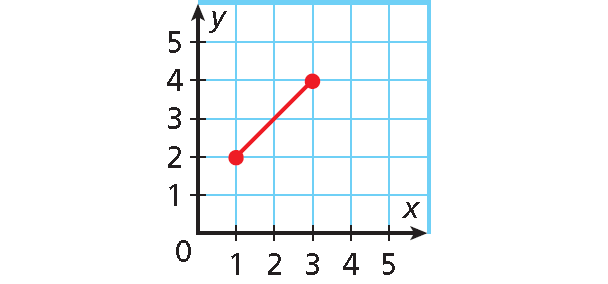
Problem 2 :
Find the domain and range of the relation shown in the mapping diagram below.
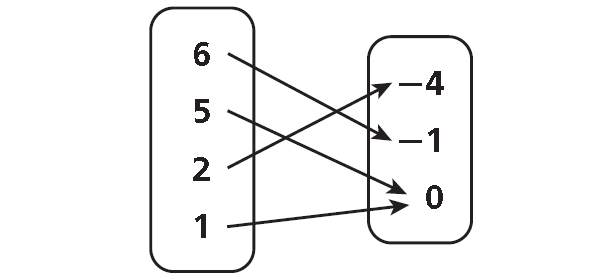
Problem 3 :
Find the domain and range of the relation shown in the mapping diagram below.
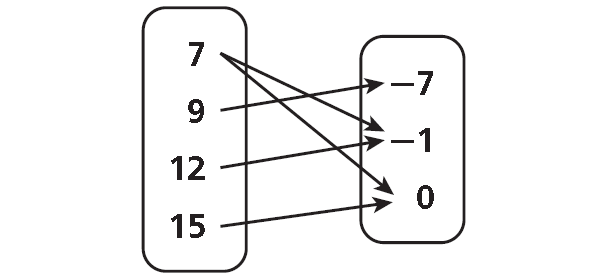
Problem 4 :
Find the domain and range of the relation shown in the table below.
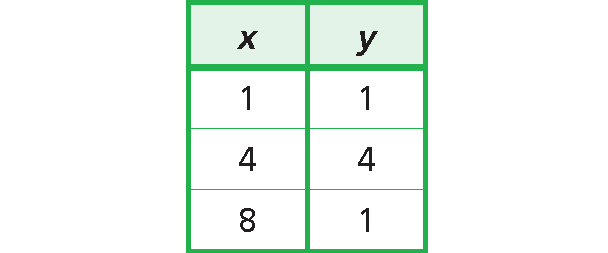
Problem 5 :
Let A = {1, 2, 3, 4} and B = {1, 4, 9, 16, 25}. If R is the relation which maps the elements from A to B using the rule f(x) = x2, then find the domain and range of R.
Problem 6 :
Let A = {1, 2, 3} and B = {5, 6, 7, 8}.
R is the relation which maps the elements from A to B as shown below.
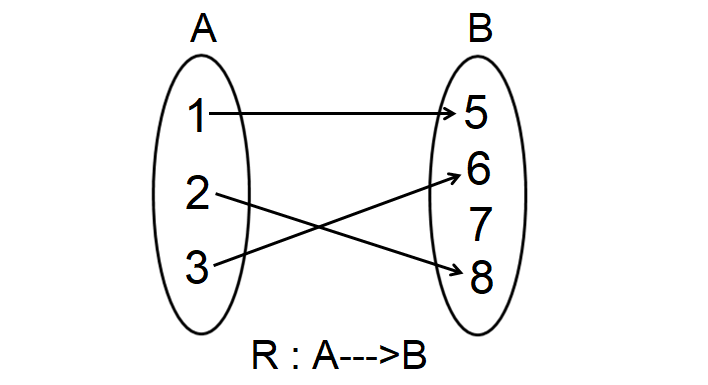
Find the domain and range of R.
Problem 7 :
Let X = {a, b, c} and Y = {d, e, f, g}.
R is the relation which maps the elements from X to Y as shown below.
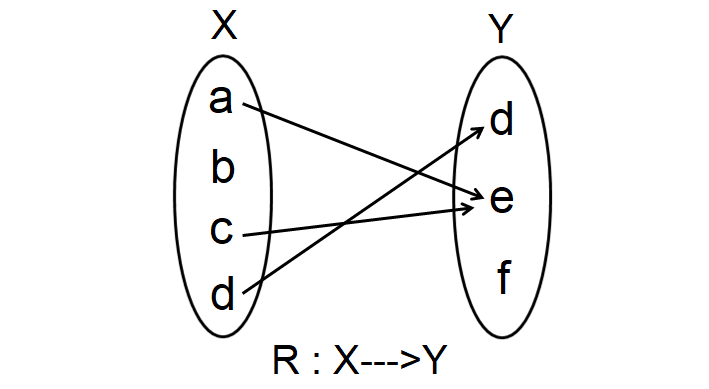
Find the domain and range of R.
Problem 8 :
Let R be a relation defined as given below.
R = {(1, 1), (2, 3), (3, 4), (2, 7)}
Find the domain and range of R and R-1. Discuss the relationship between the domain and range of R and R-1.
Problem 9 :
If R is a relation on set A = {1, 2, 3, 4, 5, 6, 7, 8} given by xRy <=> y = 3x, then R = ?
(a) {(3, 1), (6, 2), (8, 2), (9, 3)}
(b) {(3, 1), (6, 2), (9, 3)}
(c) {(3, 1), (2, 6), (3, 9)}
(d) None of these
Problem 10 :
Let A = {1, 2, 3}, B = {4, 6, 9} if relation R from A to B defined by x is greater then y. the range of R is -
(a) {1, 4, 6, 9} (b) {4, 6, 9} (c) {1} (d) None of these.
Problem 11 :
Let ƒ : R → R be given by ƒ(x) = x2+3 Find
(i) {x : ƒ(x) = 28}
(ii) The pre-image of 39.

Detailed Answer Key
1. Answer :
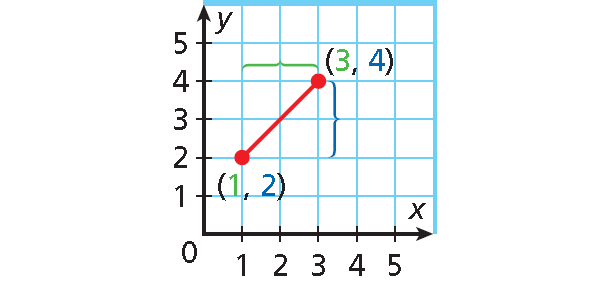
The domain is all x-values from 1 through 3, inclusive.
Domain : 1 ≤ x ≤ 3
The range is all y-values from 2 through 4, inclusive.
Range : 2 ≤ y ≤ 4
2. Answer :
Domain = {1, 2, 5, 6}
Range = {-4, -1, 0}
3. Answer :
Domain = {7, 9, 12, 15}
Range = {-7, -1, 0}
4. Answer :
Domain = {1, 4, 8}
Range = {1, 4}
5. Answer :
R maps the elements from A to B using the rule
f(x) = x2
Then, we have
f(1) = 12 = 1
f(2) = 22 = 4
f(3) = 32 = 9
f(4) = 42 = 16
So,
R = {(1, 1), (2, 4), (3, 9), (4, 16)}
Therefore,
Domain (R) = {1, 2, 3, 4}
Range (R) = {1, 4, 9, 16}
6. Answer :
From the arrow diagram shown above,
R = {(1, 5), (2, 8), (3, 6)}
Therefore,
Domain (R) = {1, 2, 3}
Range (R) = {5, 6, 8}
7. Answer :
From the arrow diagram shown above,
R = {(a, e), (c, e), (d, f)}
Therefore,
Domain (R) = {a, c, d}
Range (R) = {d, e}
8. Answer :
R = {(1, 1), (2, 3), (3, 4), (2, 7)}
Domain and range of R :
Domain (R) = {1, 2, 3}
Range (R) = {1, 3, 4, 7}
Find inverse relation R-1 :
R-1 = {(1, 1), (3, 2), (4, 3), (7, 2)}
Domain and range of R-1 :
Domain (R-1) = {1, 3, 4, 7}
Range (R-1) = {1, 2, 3}
Clearly,
Domain (R-1) = Range (R)
Range (R-1) = Domain (R)
9. Answer :
Domain of the function is A = {1, 2, 3, 4, 5, 6, 7, 8}
y = 3x
- If x = 1, y = 3(1) ==> 3
- If x = 2, y = 3(2) ==> 6
- If x = 3, y = 3(3) ==> 9
- If x = 4, y = 3(4) ==> 12
- If x = 5, y = 3(5) ==> 15
- If x = 6, y = 3(6) ==> 18
- If x = 7, y = 3(7) ==> 21
- If x = 8, y = 3(8) ==> 24
The required relation would be,
{(1, 3) (2, 6) (3, 9) (4, 12) (5, 15) (6, 18) (7, 21) (8, 24)}
So, none of these is the answer.
10. Answer :
Here R is the relation from A to B, x > y
R = {(2, 1) (3, 1)}
So, the range = {1}. Option c is correct.
11. Answer :
Let ƒ : R → R be given by ƒ(x) = x2+3 Find
(i) {x : ƒ(x) = 28}
28 = x2+3
Subtracting 3, we get
x2 = 28 - 3
x2 = 25
x = -5 and 5.
(ii) The pre-images of 39.
Preimage of 39, when f(x) = 39
39 = x2+3
x2 = 39 - 3
x2 = 36
x = -6 and 6.
Kindly mail your feedback to v4formath@gmail.com
We always appreciate your feedback.
©All rights reserved. onlinemath4all.com
Recent Articles
-
10 Hard SAT Math Questions (Part - 33)
Nov 07, 25 04:31 AM
10 Hard SAT Math Questions (Part - 33) -
Solving the HARDEST SAT Math Questions ONLY using Desmos
Nov 04, 25 07:33 AM
Solving the HARDEST SAT Math Questions ONLY using Desmos -
10 Hard SAT Math Questions (Part - 32)
Oct 30, 25 08:57 AM
10 Hard SAT Math Questions (Part - 32)
